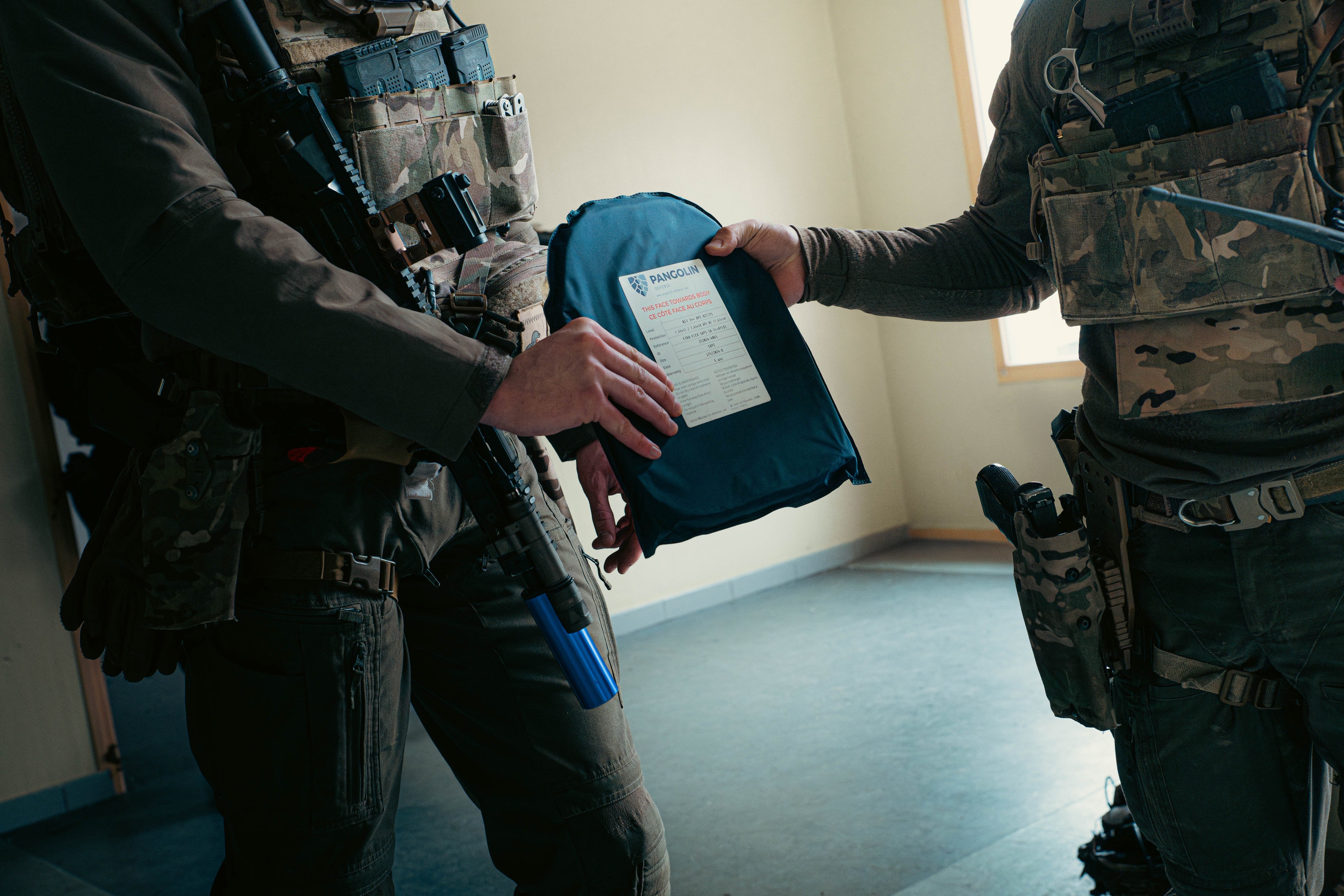
Steel vs Ceramic: Which Ballistic Plate to Choose?
In the ballistic protection market, there are two types of plates: steel and ceramic/composite . Many praise steel for its strength and low cost. However, upon closer inspection, steel has serious drawbacks that can, in some cases, make it counterproductive in terms of protection.
If you are looking for an effective solution that is adapted to modern threats , it is essential to understand the differences between these two technologies to make an informed choice.
1. Steel plates: sturdy, but at what price?
Steel ballistic plates are among the oldest and most widely used by some security forces and civilians seeking affordable protection. They are made from hardened steel and are often coated with an anti-fragmentation coating.
✅ Advantages of steel plates
- Extreme durability : Steel does not crack and can withstand multiple impacts, unlike ceramic plates which degrade after each shot received.
- Longevity : Not very sensitive to environmental conditions (humidity, heat), it does not deteriorate over time.
- Affordable Cost : Less expensive than ceramic/composite plates.
- Multi-impact protection : Can stop multiple bullets in the same spot without breaking.
❌ Major Disadvantages of Steel
1️⃣ High weight: an operational handicap
Steel plates are very heavy. A SAPI M plate (25x30 cm) can weigh more than 4 kg, almost double that of an equivalent ceramic/composite plate. This extra weight impacts mobility, fatigue and reaction speed, which can be a risk factor in a fight.
2️⃣ Spall effect: an additional threat
When steel stops a bullet, metal fragments can be projected in multiple directions, increasing the risk of injury. This effect, called "spalling," can affect the face, neck, or arms. Some manufacturers apply an anti-fragmentation coating, but it does not guarantee complete protection against this effect.
3️⃣ Backface Trauma: serious internal injuries
Unlike ceramic plates that absorb the energy of the impact, steel transmits a brutal shock wave to the wearer. This wave can cause:
- Fractures (ribs, sternum),
- Internal injuries , even cardiac arrest in the event of an impact on the chest.
Steel absorbs almost no kinetic energy, meaning that even if the bullet is stopped, the carrier's body is under enormous pressure.
Steel report:
While steel may seem attractive due to its strength and low cost, it has many disadvantages. Weight, spall effect, and backface trauma make it a much less effective option than it may seem.
2. Ceramic/composite plates: cutting-edge technology
Ceramic/composite plates use a blend of advanced materials, often silicon carbide (SiC) or alumina , reinforced with ballistic fibers (para-aramid, UHMWPE). This design allows for efficient energy absorption and optimized protection .
✅ Advantages of ceramic/composite plates
- Reduced weight : Up to 50% lighter than steel, improving mobility and reducing fatigue .
- Shock Absorption : Significantly reduces back trauma , decreasing the risk of internal injuries.
- No secondary fragmentation : Unlike steel, there is no risk of fragments being projected onto the wearer.
- Superior Protection Against Armor-Piercing Ammunition : Silicon carbide plates are specially designed to stop hard core bullets, making them more effective against military caliber armor-piercing rounds .
- Increased comfort : Better suited to long missions, thanks to their lightness and their ability to limit accumulated heat.
❌ Disadvantages of ceramic/composite plates
1️⃣ Increased fragility
Ceramic plates can crack if they undergo a significant shock (drop, non-ballistic impact) . However, some recent models incorporate advanced composite structures , reinforcing their resistance.
2️⃣ More limited lifespan
Unlike steel, ceramic/composite plates can be damaged after being hit , which limits their multi-impact capability. However, this limitation is offset by much more effective protection.
3️⃣ Higher cost
The price of a ceramic/composite plate is generally higher than that of steel. However, this investment must be considered in relation to the protection it actually offers .
Ceramics review:
Ceramic/composite plates are today the best solution for optimal protection. They offer a perfect balance between resistance, lightness and impact absorption, ensuring better survivability in real situations.
Conclusion: Why choose ceramic/composite?
Although steel plates are popular for their durability and cost, they have significant drawbacks :
- Excessive weight ,
- Risk of secondary injuries (spall effect, rear trauma) ,
- Less effective against some armor-piercing ammunition .
Ceramic/composite plates provide superior protection due to their shock absorption, light weight and better protection against armor-piercing projectiles .
Our recommendation:
🔹 If your priority is effective protection, without compromising on mobility and safety, opt for ceramic/composite.
🔹 If you are on a budget and are willing to compromise on comfort and risk of trauma, steel may be an option, but it requires additional precautions (trauma pads, anti-spall coating).
In a real combat situation, every gram and every millisecond counts. That is why military forces and professionals today favor ceramic/composite plates over steel.
Our range of ballistic protection , click here

Leave a comment
This site is protected by hCaptcha and the hCaptcha Privacy Policy and Terms of Service apply.